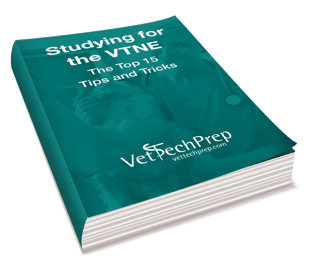
Veterinary technicians are often asked to collect samples for skin cytology, fungal cultures, or perform skin scrapes. This is a review on the most common techniques which veterinary technicians perform.
1) Skin Scrapes: Skin scrapes are most often performed to look for the presence of mites. There are numerous species of mites, but the most common to observe are Demodex or Sarcoptes.
a) Demodex- these mites live in the hair follicles and require a deep scraping for diagnosis.
Technique for deep scraping: A dulled scalpel blade, with some mineral oil on it, is held perpendicular to the skin. The blade scrapes the skin in a parallel fashion multiple times with moderate pressure at the edge of the lesion (typically an area of hair loss). The skin is squeezed and scraped until there is some mild capillary bleeding present. Debris collected on the blade is wiped onto a glass slide and examined microscopically on low power (10X).
b) Sarcoptes- these are superficial mites and can be difficult to find. Often if sarcoptes is suspected, multiple scrapes are recommended.
Technique for superficial scraping: A dulled scalpel blade, with some mineral oil on it, is held perpendicular to the skin. The blade scrapes the skin in a parallel fashion with long broad strokes over the lesions (typically pruritic areas of hairloss or scabs/crusts). No capillary bleeding is necessary. The debris is applied to the slide and examined the same as mentioned above.
2) Skin Cytology: Cutaneous cytology is used to identify bacteria or yeast, the presence of cells, neoplasia, or cells that may suggest immune disease (such as acantholytic cells seen in cases of pemphigus).
Impression smear: Used for more superficial lesions such as moist areas, pustules, draining tracts, etc. It can also be helpful on lichenified areas (dark, thickened skin) to identify Malassezia (yeast). This technique involves taking a glass slide and pressing down upon skin lesions to gather cells. After samples are taken and allowed to dry, the slides are stained using Diff Quick and rinsed. These slides should be examined at 40X and 100X (oil immersion) to identify cell types or presence of bacteria or yeast.
Another way to collect skin cytology samples is rubbing a cotton tipped applicator to the lesions and then rolling onto a slide
Tape Preps: Acetate tape can be applied to the skin lesions or debris and then placed on a slide and stained. They can be used to look for yeast (especially in lichenified areas where the skin is thick and dark and looks like elephant skin). Tape preps can also be used in flaky areas to look for Chyletiella or lice infestations.
3) DTM cultures: These are used to identify dermatophytes (fungal organisms), such as Microsporum canis or Trichophyton verrucosum.
Technique: The area to sample can be cleaned with alcohol and allowed to dry if there are excessive crusts or scales. Hair samples or a crust or scale are collected with sterile forceps and gently placed onto the DTM media. Note that the samples are placed on the surface and not imbedded into the culture medium. Another technique is the toothbrush technique and can be beneficial in patients that are not clinically symptomatic. The new toothbrush is used to brush the entire haircoat and gently tapped onto the culture plate.
DTM cultures need to be examined DAILY for 3 weeks. The culture plate turns red when fungus begins to grow. Contaminants will also cause color change (usually the white fuzzy growth on the surface) within several days. This is why it must be checked daily to determine when the color change occurred in relationship to the colony growth.
After it has been growing, macroconidia will be present. Acetate tape (clear) is touched to the surface of the growing colony and placed on a glass slide. A drop of stain is applied and observed on 10X.


 You're of course going to need to study a ton to nail the test, but there are a lot of tips and tricks that will help you make the most of your study time and we've packaged those up in a
You're of course going to need to study a ton to nail the test, but there are a lot of tips and tricks that will help you make the most of your study time and we've packaged those up in a 